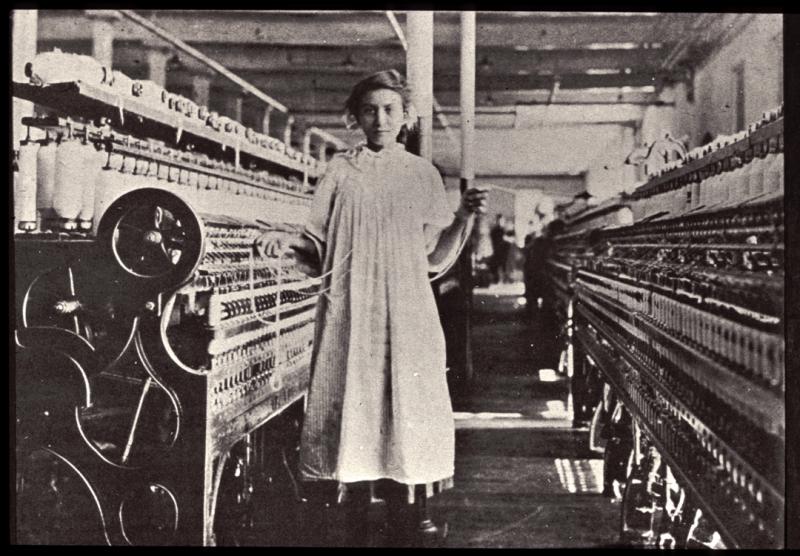Lesson Plan

Grade Level:
5-8
Time for Lesson:
2 Days plus optional follow-up.
Ohio Academic Content Standards:
- Economics: 5
- Geography: 2
- History: 9C
- People in Societies: 5, 6
- Social Studies Skills and Methods: 1, 2
Post lesson assessment:
This will take place during in class discussions before and after the use of the video coupled with follow- up activity projects.
Purpose of Lesson:
This lesson will show and demonstrate how labor intensive certain tasks were in colonial times. In this case, it will be the process in which flax fibers are turned into linen thread and woven into a shirt. At the end, students will see demonstrations of this process. To conclude the lesson, there will be follow up activities that you may choose to explore with your students.
Primary Sources:
Lowell Mill Girls and the Factory System, 1840 (The Gilder Lehrman Institute of American History)
Primary source from Harriet Hanson Robinson (Internet Modern History Sourcebook, Fordham University)
Other Resources:
On Flax:
Basic information about flax and its uses. (The Thomas Jefferson Agricultural Institute)
Weaving and dyeing flax. (Colonial Williamsburg)
How the layperson can grow flax. (The Gardener's Network)
Source for flax seed and other heirloom vegetable seeds. (Landis Valley Museum)
On the textile mills at Lowell, Massachusetts
American Textile History Museum in Lowell, Massachusetts
Lowell Girls Webquest. (Sun Associates, North Chelmsford, Mass.)
About the Lowell Girls Strike of 1836. (History Matters, George Mason University)
Sequence:
1. Introduce the topic by asking students where their clothes come from, how they are made, what they think the lives of those people who make it might be like.
2. Ask how that process might have been different before powered machines.
3. Go to the Colonial Williamsburg site about about colonial weaving and dyeing, linked above.
4. Ask students about flax and its many uses. Some students may already know of it for the use of its seeds for health reasons. Ask them about other natural fibers that were used for cloth in colonial times. They will probably bring up cotton. You should tell them that cotton required a very hot climate and would not grow in what would become the United States. You might also mention that it was very labor intensive and was not practical for people to grow before the cotton gin in 1793.
5. Have the students watch the Flax Video (it lasts about 10 minutes). In the video, students will see images of flax production and processing from medieval times through the 1800s. They will see pictures of flax processing tools as well. There will be images and video of colonial flax spinning and weaving. At the end, they will hear letters written by Lowell Factory Girls.
6. After the movie, lead a discussion about what they saw. Again, point out how labor intensive the process was. You might ask how the growth of factories might have affected the lives of people living in the United States in the early 1800s.
Questions to Ask
a. Ask students to repeat the process of flax growing and processing
i. Planting
ii. Harvesting by pulling
iii. Drying
iv. Rippling to remove seeds
v. Retting
vi. Drying
vii. Flax Break
viii. Scutcheon
ix. Hatchel
x. Spinning thread
xi. Dyeing
xii. Weaving
b. What kinds of jobs in the process could have been done by children their age?
c. How might this difficult and lengthy process have affected their lives? (answers might include having less clothes, clothes mended to make them last longer, clothes being more expensive.) You might ask any students who live in old houses to see how the size of their closets are compared to modern houses.
d. Why did New England girls leave their farms to go to work in factories?
e. Describe the conditions in the factories at the time.
Follow up Activities:
a. Draw a poster showing all of the stages of Flax processing.
b. Develop a recruiting poster for the Lowell Mills to recruit girls.
c. Write a letter as if you were a worker in the mills writing home to your parents describing your working conditions and daily routines.
d. Study the photographs of Lewis Hine, who documented in photographs , child labor in the early 1900’s.
e. Have students explore and report today’s child labor laws.
